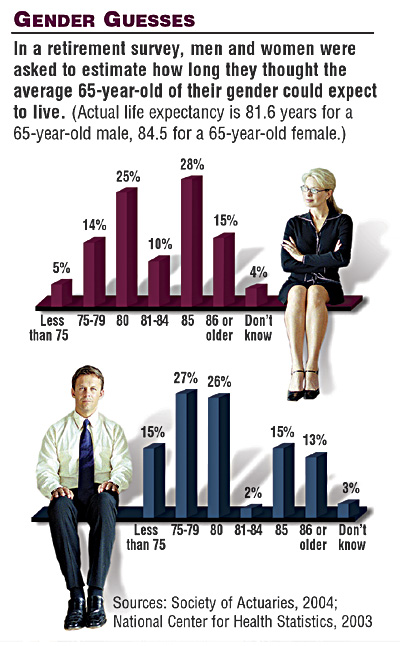Consider
Your Life Expectancy
Have
you given much thought to how long you will live? In a recent
survey, more than eight out of 10 workers were unable to give
a personal life expectancy that is close to the actual life
expectancy for their age. Only about one-third expected to
live longer than the average life expectancy.¹
Estimating
your own life expectancy is one area where it's probably better
to overshoot. Planning financially to live a long life may
help you avoid a retirement income shortfall, regardless of
how long you actually live.
 Steps
to a Longer Life Expectancy
Steps
to a Longer Life Expectancy
There are two explanations why people under-estimate
how long they will live. First, life expectancies have grown
significantly over the past several decades. In 1941, a 45-year-old
male could expect to live to age 70. In 2002, life expectancy
for a 45-year-old male increased to 78.2,3
Second, life expectancy
grows longer with age. A 70-year-old male in 2002 had a life expectancy of 83,
five years longer than a 45-year-old. And an 80-year-old male in 2002 had a
life expectancy of 88, more than 10 years longer than his 45-year-old counterpart.4
Don't
Risk a Cost Overrun
If you underestimate how long you might live when planning
for retirement, you run the risk of outliving your assets.
By including a realistic expectation of life in your overall
retirement plan, you can determine how much you should be
setting aside now.
Remember
that medical bills, long-term-care costs, and other expenses
commonly associated with the onset of age can strain even
a robust portfolio. In fact, you may want to base your retirement
planning on the assumption that you will live five years longer
than your estimated life expectancy to provide a financial
cushion.
It's
not much fun trying to calculate how many years you might
have left. But underestimating your life expectancy could
be a mistake that has far-reaching consequences.
1)
Society of Actuaries, 2004
2) 1941 Standard Ordinary Mortality Table, National Association
of Insurance Commissioners
3, 4) National Center for Health Statistics, 2003
 Steps
to a Longer Life Expectancy
Steps
to a Longer Life Expectancy